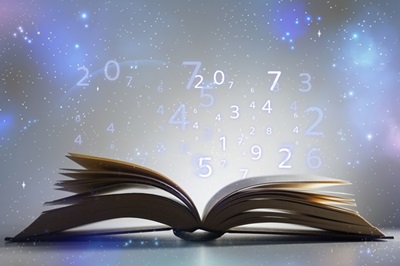Sign In
Sequences
| | 15 Theory slides |
| | 10 Exercises - Grade E - A |
| | Each lesson is meant to take 1-2 classroom sessions |
Catch-Up and Review
Here are a few recommended readings before getting started with this lesson.
Describing a Pattern

Sequence



Pattern
A pattern describes a repeated change of numbers, shapes, colors, actions, or other elements. Patterns are based on a specific rule. The rule can also be used to find missing steps in the pattern. In the example below, matches have been placed together to create three figures.

Is it possible to find a pattern? Notice that each figure has one more triangle than the previous one. Therefore, the next figure should have 4 triangles.

There is also a pattern in the number of matches. In each step, the number increases by 2. The first figure has 3 matches, the second figure has 5 matches, the third figure has 7 matches, and so on.

The number of matches in the next couple of figures can be found using this pattern.
Numerical Patterns in Books
Emily and Kevin heard whispers of a mythical library filled with magical books in their town. Their research led them to some books full of mysterious numbers left behind by earlier explorers.
Answer
Next Three Terms: 30, 37, and 44
Next Three Terms: 768, 3072, and 12288
Hint
Solution





Finding the Terms of a Sequence
Special Sequences: Arithmetic Sequences
Sequences are ordered sets of numbers that follow identifiable patterns. Two types of sequences are arithmetic and geometric, each with their own unique characteristics. They play a key role in understanding the organized relationships between numbers.
Arithmetic Sequence


Special Sequences: Geometric Sequences
Unlike the adding pattern in arithmetic sequences, geometric sequences multiply each term by a constant factor. The characteristics of geometric sequences will now be explored.
Geometric Sequence

| a1>0 | a1<0 | |
|---|---|---|
| r>1 | Increasing 3 →×2 6 →×2 12 →×2 24 →×2 48… |
Decreasing -3 →×2 -6 →×2 -12 →×2 -24 →×2 -48… |
| r=1 | Constant
3 →×1 3 →×1 3 →×1 3 →×1 3… |
Constant
-3 →×1 -3 →×1 -3 →×1 -3 →×1 -3… |
| 0<r<1 | Decreasing 48 →×21 24 →×21 12 →×21 6 →×21 3… |
Increasing -48 →×21 -24 →×21 -12 →×21 -6 →×21 -3… |
| r<0 | Alternating
3 →×(-2) -6 →×(-2) 12 →×(-2) -24 →×(-2) 48… |
Alternating
-3 →×(-2) 6 →×(-2) -12 →×(-2) 24 →×(-2) -48… |
A Reading Challenge for the Mysterious Library
After a while, Izabella joined Kevin and Emily on their adventure. To find the mysterious library, they decided to challenge themselves by reading the books as quickly as possible.
They each had their own reading goals. Emily aimed to increase her reading by 15 pages each day, Kevin planned to read double the pages of the previous day, and Izabella alternated between reading 15 and 25 pages every day.
Hint
Solution

Since there is a common difference between consecutive terms, the number of pages read forms an arithmetic sequence.
| Sequence | Classification |
|---|---|
| 15,30,45,60,… | Arithmetic Sequence |

In this case, there is no common difference or common ratio between consecutive terms, so the number of pages is neither arithmetic nor geometric.
| Sequence | Classification |
|---|---|
| 15,25,15,25,… | Neither arithmetic nor geometric |

Since there is a common ratio between consecutive terms, the number of pages read forms a geometric sequence.
| Sequence | Classification |
|---|---|
| 5,10,20,40,… | Geometric Sequence |
Identifying Sequences
The following applet shows the first five terms of an infinite sequence. Analyze them carefully and determine whether the sequence is arithmetic, geometric, or neither.

Graphing Sequences
As Emily, Kevin, and Izabella continued their search, the books revealed more clues leading them closer to the magical library. They noticed that the mysterious numbers left by previous adventurers seemed to follow distinct patterns.
Find the fifth term of each sequence, then use the first five terms to graph each sequence on a coordinate plane.
Answer
Graph:

Graph:

Hint
Solution

In this sequence, the difference between consecutive terms is 7, so it is an arithmetic sequence with a common difference of 7. This means that the fifth term of the sequence is calculated by adding 7 to the fourth term.

To graph this sequence, start by drawing a coordinate plane where the horizontal axis represents the position n and the vertical axis represents the term an. Then, plot the ordered pairs (n,an) on the coordinate plane.


In this sequence, the difference between the first and second terms is 6, but the difference between the second and third terms is 18. There is no common difference between consecutive terms. However, there is a common ratio between consecutive terms — 3 — so this is a geometric sequence. The fifth term of this sequence will be 3 times the fourth term.

To graph this sequence, start by drawing a coordinate plane where the horizontal axis represents the position n and the vertical axis represents the term an. Then, plot the ordered pairs (n,an) on the coordinate plane.

Looking over the completed graphs, Izabella said, The arithmetic sequence looks like a straight line, but the geometric sequence looks like a curve. I wonder if this will be important.
Explicit Rule of Arithmetic Sequences
Every arithmetic sequence can be described by a linear function that is defined for the set of counting numbers. This function, referred to as the explicit rule of an arithmetic sequence, follows a specific general format.
an=a1+(n−1)d
Proof
Justification Based on Induction
| n | an | Rewrite |
|---|---|---|
| 1 | a1 | a1+0⋅d |
| 2 | a2 | a1+1⋅d |
| 3 | a3 | a1+2⋅d |
| 4 | a4 | a1+3⋅d |
| 5 | a5 | a1+4⋅d |
The coefficient of the common difference is always 1 less than the value of the position n. This makes it possible to write an explicit rule like the following formula.
an=a1+(n−1)d
Proof
Proof by Using the Point-Slope Form of a Line
Unlocking the Door
In the heart of their town, the three friends finally reached the entrance of the mystical library.
All the mysteries lay behind a door with symbols on it. To unlock the door, they had to solve one more puzzle. Help them open the door.
Hint
Solution

n=8
Subtract term
Multiply
Add terms
Identifying a Specific Term of an Arithmetic Sequence
The following applet shows the first five terms of an infinite arithmetic sequence. Determine the explicit rule of the sequence to calculate the indicated term of the sequence.

The Fibonacci Sequence
While exploring the magical library, Emily, Kevin, and Izabella came across a section dedicated to the Fibonacci sequence. This sequence, discovered by the Italian mathematician Leonardo Fibonacci, has occupied minds for centuries with its fascinating properties.




If we carefully observe the change that occurs between each consecutive term, we can describe the pattern of the sequence. Here, we can see that the difference from one term to the next is 20.
We see that each term can be found by adding 20 to the previous term. Therefore, the answer is C.
We can extend the pattern to find the next three terms in the sequence.
The next three terms are 87, 107, and 127.
We can start by finding the difference between consecutive terms of the given sequence.
We can see that the difference between consecutive terms is not common. Let's check whether consecutive terms are multiples of each other.
Here, we see that each term can be found by multiplying the previous term by - 12. Therefore, the answer is A.
Let's extend the pattern to find the next two terms in the sequence. We will multiply the fourth term by - 12 to find the fifth term. Finally, we multiply that number by - 12 one more time.
The next two terms are - 2 and 1.
Determine whether each sequence is arithmetic, geometric, or neither.
| Position | 3 | 4 | 5 | 6 |
|---|---|---|---|---|
| Term | 0.25 | 1.25 | 2.25 | 3.25 |
Let's analyze the given sequence to see if there is a common difference between consecutive terms. The difference can be found by subtracting any term from its preceding term.
Since there is no common difference between each pair of consecutive terms, the sequence is not an arithmetic sequence. To check if it is a geometric sequence, we need to see if there is a common ratio between consecutive terms. The ratio can be found by dividing any term by its preceding term.
Since there is a common ratio of 9 between each pair of consecutive terms, the sequence is a geometric sequence.
Let's check if the sequence has a common difference between consecutive terms.
Since there is a common difference of 1 between each pair of consecutive terms, the sequence is an arithmetic sequence.
Find the missing term in the sequence.
| Position | 1 | 2 | 3 | 4 |
|---|---|---|---|---|
| Term | 1.5 | 4.3 | 5.7 |
| Position | 3 | 4 | 5 | 6 |
|---|---|---|---|---|
| Term | 354 | 452 | 553 |
We do not know if the sequence is arithmetic or geometric. If it is an arithmetic sequence, the difference between consecutive terms must be the same for all pairs of consecutive terms. Let's calculate the difference between the fourth and third terms.
The difference is 1.4. Let's subtract 1.4 from the third term to find the second term. 4.3 - 1.4 = 2.9 The missing term of the sequence is 2.9. Notice also that each term is found by adding 1.4 to the previous term. This pattern ensures that our solution is accurate and that it is an arithmetic sequence.
If the difference between any two consecutive terms was different, this would mean that the sequence was not arithmetic. If that were the case, we would follow a different method, like looking for a common ratio.
Again, we will start by finding the difference between the fourth and third terms.
The second term is 35 more than the first term. If we follow that pattern, the third term is 4 25 plus 35.
The missing term of the sequence is 5. Notice also that each term is found by adding 35 to the previous term. This pattern ensures that our solution is accurate and that it is an arithmetic sequence.


Let's take a look at the description. Sequence [-1em] First term: - 19 Rule:Add19 We will find the first four terms of the sequence because each graph has four points. Recall that a term position takes whole number values and the first term is - 19.
We add 19 each time to get the next term.
Now, we can plot the ordered pairs (1,- 19), (2,0), (3,19), and (4,38) on the coordinate plane.
This graph corresponds to B.
In this sequence, the first term is 324 and its rule is defined as the previous term divided by 3.
Sequence [-1em] First term: 324 Rule:Divide by3
Let's make a table for the first four terms.
Now we can plot the ordered pairs (1,324), (2,108), (3,36), and (4,12) on the coordinate plane.
This graph corresponds to A.
Write the explicit rule for the arithmetic sequence.
We want to write an explicit rule for the given arithmetic sequence. Let's start by recalling the general formula for an arithmetic sequence. a_n= a_1+(n-1) d In this form, a_1 is the first term in a given sequence, d is the common difference from one term to the next, and a_n is the nth term in the sequence. For this sequence, the first term is a_1= 4. Let's use the other terms to determine the common difference d. 4 +12 ⟶ 16 +12 ⟶ 28 +12 ⟶ 40 ... The common difference is 12. We can substitute these two values into the formula and simplify to find the explicit rule formula for this sequence.
The rule for the nth term of the given arithmetic sequence is a_n=12n-8.
The given sequence is an arithmetic sequence with first term 15 and common difference - 7.
15 -7 ⟶ 8 -7 ⟶ 1 -7 ⟶ - 6 ...
Let's substitute these values into the formula and simplify to find the explicit rule for this sequence.
The rule for the nth term of the given arithmetic sequence is a_n=- 7n+22.




